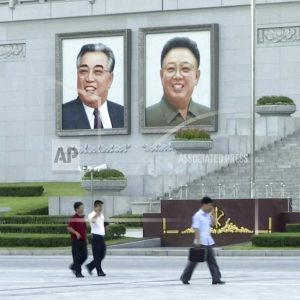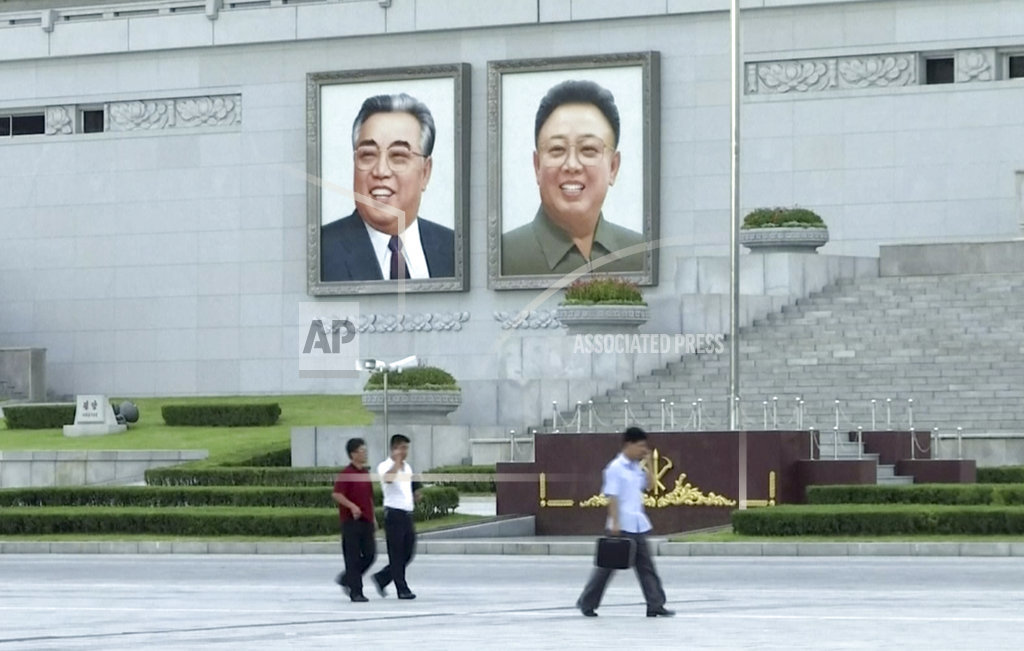
BEDMINSTER, New Jersey (AP) — President Donald Trump on Friday again delivered a bold warning to North Korea, tweeting that the U.S. military is “locked and loaded” if the isolated rogue nation acts “unwisely,” escalating an exchange of threats between the nuclear-armed nations.
American and South Korean officials said they would move forward with large-scale military exercises later this month that North Korea claims are a rehearsal for war. Pyongyang has laid out plans to strike near the U.S. territory of Guam.
Trump tweeted Friday: “Military solutions are now fully in place, locked and loaded, should North Korea act unwisely. Hopefully Kim Jong Un will find another path!”
His provocative public declarations, a break from the careful language of his predecessors, have only grown louder as the week as gone on. They included the president musing that his initial warning of delivering “fire and fury” to North Korea — which appeared to evoke a nuclear explosion — was too timid. The days of war rhetoric have alarmed international leaders.
“I don’t see a military solution and I don’t think it’s called for,” said German Chancellor Angela Merkel. She declined to say whether Germany would stand with the U.S. in case of a military conflict with North Korea and called on the U.N. Security Council to continue to address the issue.
“I think escalating the rhetoric is the wrong answer,” Merkel added.
Russia’s foreign minister, Sergey Lavrov, estimated the risk of a military conflict between the U.S. and North Korea as “very high,” and said Moscow was deeply concerned.
“When you get close to the point of a fight, the one who is stronger and wiser should be the first to step back from the brink,” Lavrov said Friday.
Trump’s bluster, however, stands in stark contrast to an ongoing back channel for negotiations between the United States and North Korea, which came to light Friday. It had been known the two sides had discussions to secure the June release of an American university student. But it wasn’t known until now that the contacts have continued, or that they have broached matters other than U.S. detainees.
People familiar with the contacts say the interactions have done nothing thus far to quell tensions over North Korea’s nuclear weapons and missile advances, which are now fueling fears of military confrontation. But they say the behind-the-scenes discussions could still be a foundation for more serious negotiation.
Despite tensions and talk of war, life on the streets of the North Korean capital remains calm. There are no air raid drills or cars in camouflage netting as was the case during previous crises. At a park in central Pyongyang on Friday evening, young people practiced volleyball and grandparents and parents watched children on climbing frames and swings.
North Koreans have lived for decades with the state media message that war is imminent, the U.S. is to blame and their country is ready to defend itself. State-run media ensure that the population gets the North Korean side of the story, but don’t convey any sense of international concern about the situation.
One 81-year-old resident, Ri Chong Song, says he’s still going dancing in the park, a common pastime for the elderly, because he’s confident that his country will survive.
Two days after North Korea laid out its plans to strike near Guam with unsettling specificity, there was no observable march toward combat. U.S. officials said there was no major movement of U.S. military assets to the region, nor were there signs Pyongyang was actively preparing for war.
As it is, the U.S. has a robust military presence in the region, including six B-1 bombers in Guam and Air Force fighter jet units in South Korea, plus other assets across the Pacific Ocean and in the skies above. U.S. military options range from nothing to a full-on conventional assault by air, sea and ground forces. Any order by the president could be executed quickly.
The U.S.-South Korea exercises are an annual event, but they come as Pyongyang says it is readying a plan to fire off four Hwasong-12 missiles toward the tiny island, which is U.S. territory and a major military hub. The plan would be sent to Kim for approval just before or as the U.S.-South Korea drills begin.
Called Ulchi-Freedom Guardian, the exercises are expected to run Aug. 21-31 and involve tens of thousands of American and South Korean troops on the ground and in the sea and air. Washington and Seoul say the exercises are defensive in nature and crucial to maintaining a deterrent against North Korean aggression.
The exercises were scheduled well before tensions began to rise over Trump’s increasingly fiery rhetoric and North Korea’s announcement of the missile plan, which if carried out would be its most provocative launch yet. Along with a bigger set of maneuvers held every spring, the exercises are routinely met by strong condemnation and threats of countermeasures from North Korea.
The heightened military activity on the peninsula this time is a concern because it could increase the possibility of a mishap or an overreaction of some sort by either side that could spin into a more serious escalation. North Korea has been increasingly sensitive to the exercises lately because they reportedly include training for “decapitation strikes” to kill Kim Jong Un and his top lieutenants.
Pyongyang is also switching its propaganda machine into high gear by bringing in a large number of foreign journalists to ensure it gets global attention for an event next week in honor of its ruling Kim family on Mount Paektu, a dormant volcano that straddles the Chinese border and is something of a spiritual home for the regime.
Defense officials in Seoul confirmed that the exercises are expected to begin without any delays, but refused to provide further details. According to the U.S. Department of Defense, Ulchi-Freedom Guardian involves about 40,000 troops, along with civilian South Korean government personnel who train their civil defense responses.
The possibility of escalation is made even more acute by the lack of any means of official communication across the Demilitarized Zone, though there has been no easing of the barrage of inflammatory comments in the U.S. and the North since new sanctions against North Korea were announced last week.



